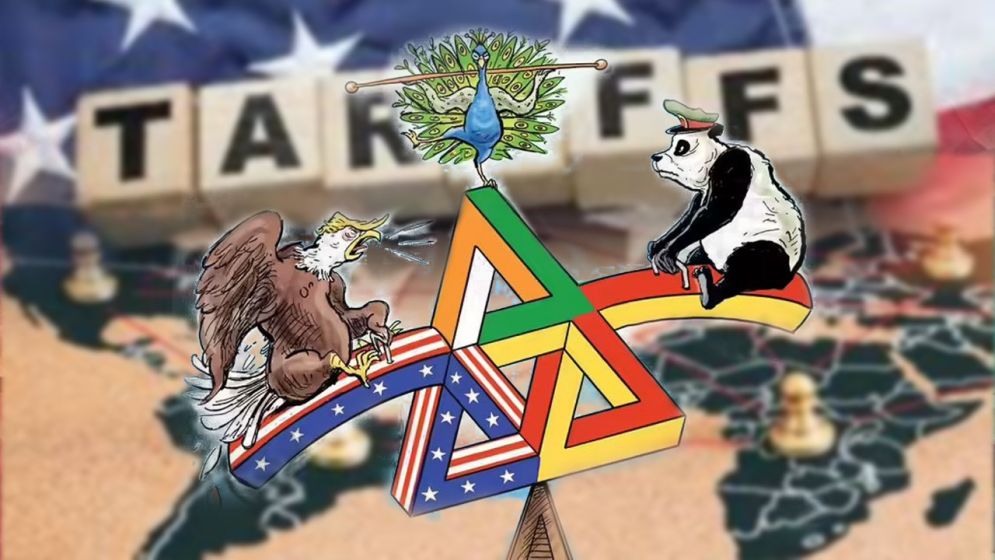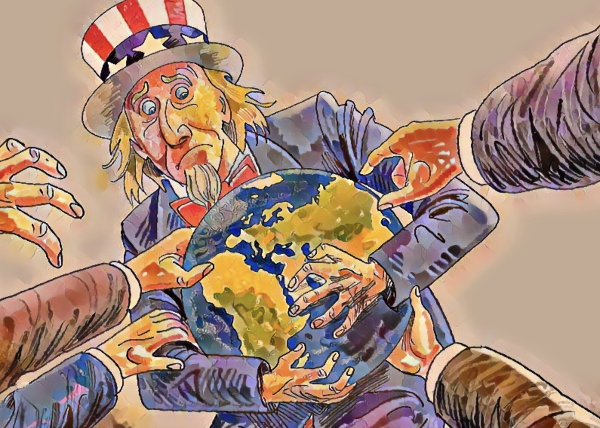How an oil-soaked trade dispute could tilt the next global order

From Dhaka, the first week of August looked like yet another passing episode in the long ongoing negotiation of the U.S.-India trades spats–this time over soybeans.
With Beijing stepping back from purchases and America’s harvest season looming, Washington seemed eager to redirect its excess crop to India, mindful that soybean farmers form a dependable slice of Donald Trump’s political base.
But in just three days, the frame shifted. What began as agricultural haggling turned into geopolitical high-stakes poker.
On August 6, Trump’s trade envoy, Steve Witkoff, spent over three hours in St. Petersburg with Vladimir Putin. The meeting, politely described as “constructive,” produced no obvious breakthrough.
Hours later, the White House hit Indian exports with an additional 25 percent tariff–nearly doubling effective duties to about 50 percent.
The official line was that Washington was penalizing India for buying cut-rate Russian oil. The unofficial reality: it was a calculated demonstration that the U.S. will, when necessary, squeeze a partner’s economic sovereignty to advance its strategic objectives.
Here in South Asia, the urgency is obvious–and it has nothing to do with soybeans.
Ukraine remains at the center of American strategic thinking. Russia’s slow but steady battlefield advances leave Moscow with little reason to compromise. Rising oil and gas revenues–up from last year–are fueling the Kremlin’s war chest.
Meanwhile, the BRICS bloc is experimenting with energy trades in local currencies, as July’s Rio summit echoed with calls for “economic sovereignty” from the dollar.
If such systems take root, Washington’s sanctions will lose bite. The Americans know their leverage window is closing.
Add to this the domestic political clock in Washington: midterm elections are just a year away. Inflation may have eased, but fuel prices are still a political tripwire.
A small uptick in Brent crude can ripple into higher pump prices within weeks, eroding consumer confidence and boxing in the Federal Reserve on interest rate cuts–cuts the White House sees as vital to keeping growth on track through 2025.
A blanket embargo on Russian oil would almost certainly trigger that spike.

Has India become a scapegoat?
That’s where New Delhi comes into focus.
In just two years, it has gone from a marginal buyer to Moscow’s most important swing customer, importing between 1 and 1.8 million barrels of crude daily. Its state-owned refiners, unbound by rigid long-term contracts, can pivot quickly.
Even a modest cut–200,000 to 300,000 barrels a day–could force Russia to offer deeper discounts elsewhere, shaving billions off its annual oil revenue without sparking a global price surge.
China, with an even larger appetite for Russian crude, has been spared the squeeze–too risky for supply chains, too entangled in tariff talks. That leaves India as the pressure point of choice.
Seen from the Bay of Bengal, this is obviously not a soybean or shrimp or tariff story. It is a test of whether Washington can use trade as a scalpel to weaken the Kremlin without destabilizing energy markets, and whether New Delhi can turn that pressure into leverage–securing strategic and economic wins without surrendering its autonomy.
The outcome will resonate far beyond bilateral trade. It will shape who sets oil prices, which currencies dominate energy trade, and whether the coming global order bends toward U.S. primacy or a more multipolar, BRICS-shaped balance of power.
The first signs of such movement are already visible. A major Indian state refiner has quietly cut back its Russian crude intake as price discounts narrow–a subtle shift, but precisely the kind Washington hopes to engineer.
In New Delhi, the irritation however is unmistakable. For months, it has watched the U.S. oscillate between warm overtures and sharp elbows–extolling partnership one week, slapping tariffs the next.
These measures may well protect American motorists from higher pump prices, but they threaten to edge up India’s own fuel costs.
Beneath the posturing, however, lies a transactional logic

Complex geopolitical equation
Pakistan, despite entering this round with scant leverage, has managed to secure a tariff reprieve by indulging Trump’s pet causes–from a cryptocurrency loophole to his Nobel Peace Prize ambitions.
India’s leverage is of an entirely different magnitude: a billion-strong consumer market, a pivotal geography, deep technology and defense links, and unmatched influence over global oil flows.
The smarter play for New Delhi is not to escalate but to bargain–trading short-term compliance for concessions that matter in the long term.
To my understanding, the whole episode is indeed a live test of Washington’s ability to sap Russia’s war funding without igniting a fuel price spike, to contain China’s strategic reach, and to slow BRICS’ evolution into a rival economic architecture–all while keeping U.S. inflation tame enough to clear the path for pre-midterm interest rate cuts.
For India, it is obviously about leveraging its status as the world’s key swing buyer in energy markets to defend its autonomy, preserve its strategic options, and still bank tangible gains.
And the stakes go far beyond bilateral trade.
Whoever shapes the outcome here will influence the pricing of the world’s most strategic commodity, the currencies that underpin energy trade, and the tilt of the next global order–whether toward continued U.S. primacy or a more multipolar, BRICS-defined balance of power.
From South Asia’s vantage point, so this is not just a U.S.-India contest, but a hinge moment for the rules that will govern power, markets, and money for years to come.
—
Md Sazzad Amin is Bangla Outlook’s chief geopolitical columnist

